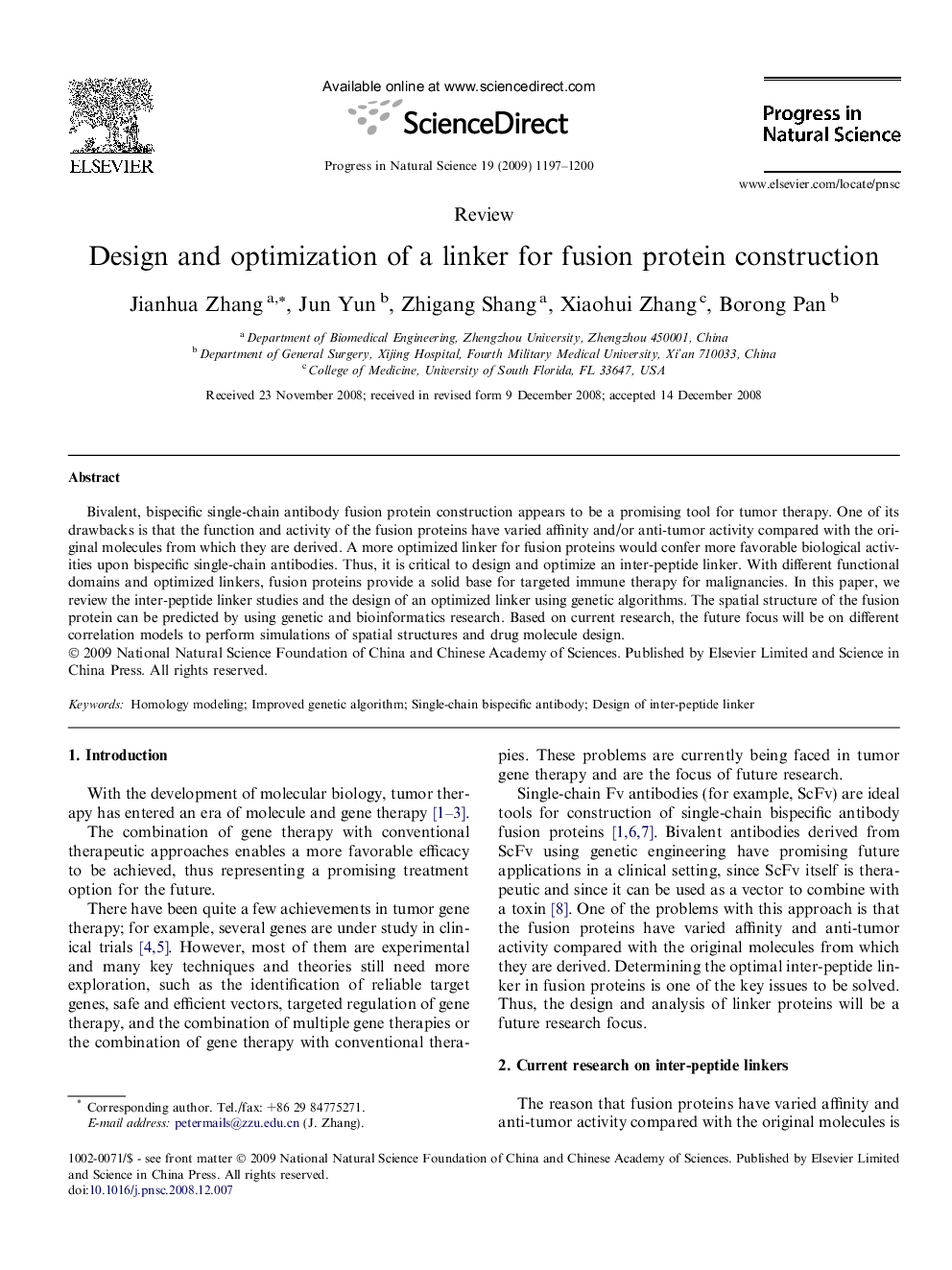| Article ID | Journal | Published Year | Pages | File Type |
|---|---|---|---|---|
| 1548378 | Progress in Natural Science: Materials International | 2009 | 4 Pages |
Bivalent, bispecific single-chain antibody fusion protein construction appears to be a promising tool for tumor therapy. One of its drawbacks is that the function and activity of the fusion proteins have varied affinity and/or anti-tumor activity compared with the original molecules from which they are derived. A more optimized linker for fusion proteins would confer more favorable biological activities upon bispecific single-chain antibodies. Thus, it is critical to design and optimize an inter-peptide linker. With different functional domains and optimized linkers, fusion proteins provide a solid base for targeted immune therapy for malignancies. In this paper, we review the inter-peptide linker studies and the design of an optimized linker using genetic algorithms. The spatial structure of the fusion protein can be predicted by using genetic and bioinformatics research. Based on current research, the future focus will be on different correlation models to perform simulations of spatial structures and drug molecule design.
